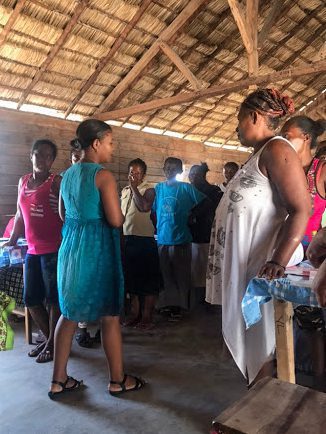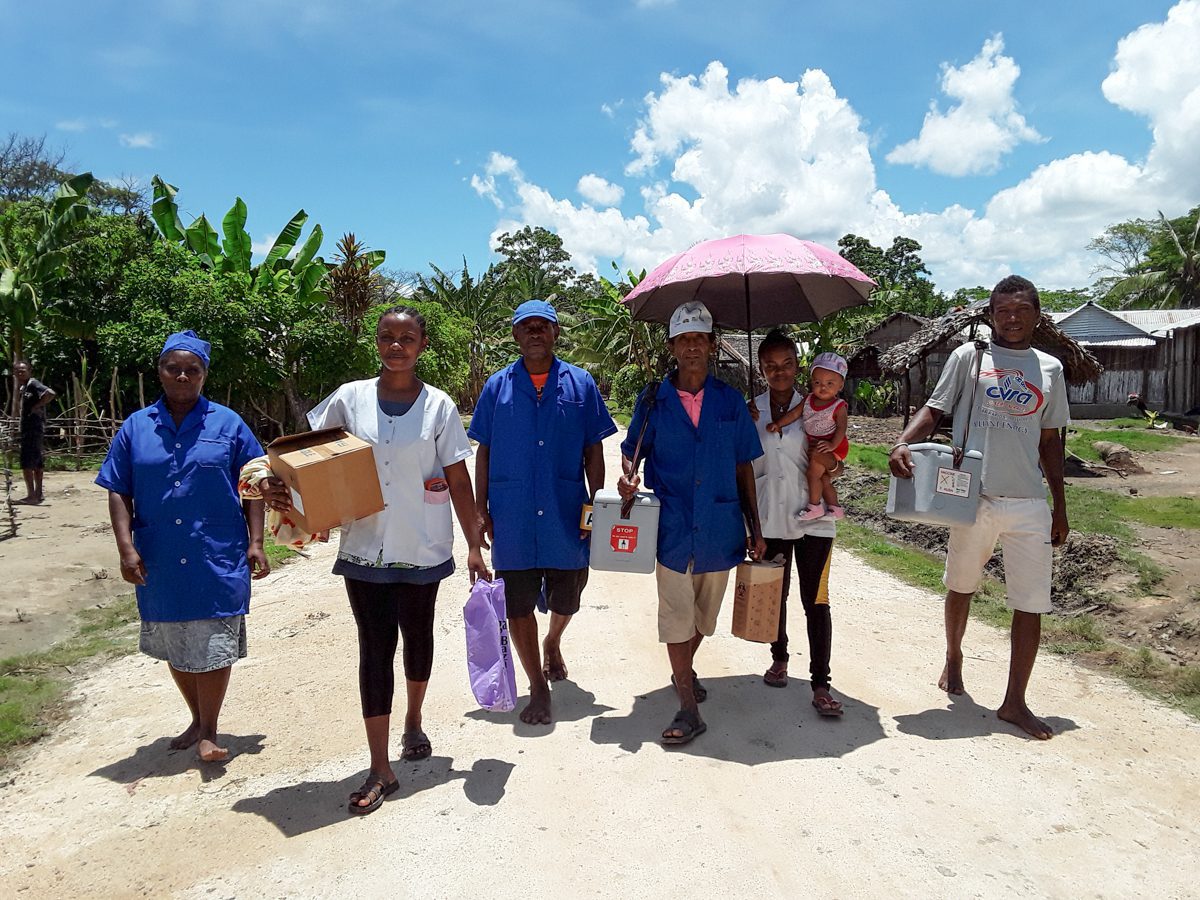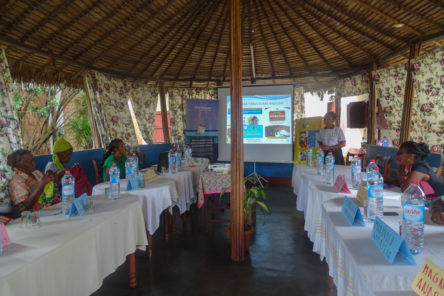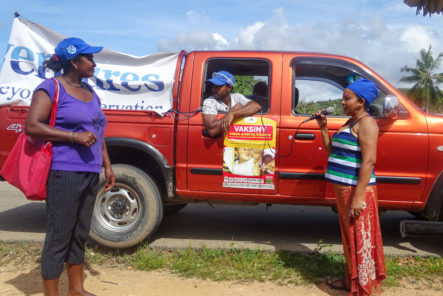By Melinda Fenn, Community Health Intern
“Can measles be fatal?” I wondered, the first time I saw vitamin A being given to a suffering child.
In January, I returned to Madagascar, my homeland, for the first time in 10 years. It was a sobering homecoming however, as the country was in the midst of a measles outbreak. In the first month of my internship with Blue Ventures (BV) in Andavadoaka, a coastal village in the southwest, I witnessed community members and coworkers being affected by a disease that I had naively thought was eradicated. I quickly learned that measles can indeed be fatal, and that thousands of people across the country had lost their lives during the outbreak.
It turned out that many people were asking similar questions to me: “Is measles fatal? What even is measles?” so I learned very quickly.
Measles is a viral infection that is renowned for being highly infectious, spreading easily and quickly within communities.
Measles is a viral infection that is renowned for being highly infectious, spreading easily and quickly within communities. Ten to 12 days after contact with someone with the illness, a person can develop the characteristic symptoms of the disease. Many sufferers will get better by themselves, but children, pregnant women, and people with other medical problems such as malnutrition or HIV, are at higher risk of serious complications such as encephalitis, pneumonia and blindness.
In collaboration with partners such as PSI Madagascar, USAID Mikolo and Mahefa Miaraka, BV has been training local women to provide family planning support and other basic health services in their communities for over 12 years. Since the start of the measles epidemic, BV’s community health team has been working with these community health workers (CHWs) to treat measles cases and prevent future cases.

Photo: Leah Glass

Measles training in Andavadoaka | Photo: Melinda Fenn
In Andavadoaka, the BV community health team, together with the head midwife in charge of Andavadoaka’s health clinic, trained all the local CHWs in the diagnosis and treatment of measles. This is mostly based around managing symptoms, but as vitamin A deficiency is associated with more severe forms of the disease, vitamin A is often given as a treatment too.
The CHWs were also informed of the national measles vaccination campaign led by Madagascar’s Ministry of Health, and in collaboration with partners such as USAID, Mahefa Miaraka, Unicef, the World Health Organisation (WHO) and BV. More than half of the 19,539 measles cases that occurred in 2018-2019 were people with no vaccination or unknown vaccination status, so the campaign partnership has been distributing measles vaccines to prevent further spread of the disease, alongside vitamin A supplements.
Since these trainings, BV has been visiting villages with the CHWs on awareness-raising missions, and supporting the vaccination of children under nine years old. It’s been a privilege to work with the community health team during this time, and I’m comforted to know that the CHWs have returned to their villages with new skills and knowledge that they will pass on to their communities. Really excitingly, we have also been able to use local radio to raise awareness on a larger scale and provide educational information on measles to communities throughout the region! Every little helps to ensure that the word is spread as far and wide as possible.

Community health workers on a vaccination and awareness raising mission | Photo: Melinda Fenn
Although I only saw the response in the southwest, I know that these same collaborations with CHWs have been taking place in all of BV’s sites, across Madagascar. I had a chance to speak to Rinah Rakotondrazaka from the community health team in Maintirano, one of the areas most affected by the rapid spread of measles.
BV has been supporting the distribution of the measles vaccine and vitamin A across the Melaky region and especially in the town of Maintirano. We were also able to actively participate in outreach campaigns with the Melaky Regional Health Authority where we vaccinated children in the Barren Isles and along the Maintirano coast as well as in the town. – Rinah Rakotondrazaka
Towards the end of my internship I visited Mahajamba, BV’s newest site in northwest Madagascar. Felana, BV’s community health coordinator, and I met the midwife in charge of health clinic in Andranoboka village in Mahajamba Bay to discuss the results of the measles campaign, and we learned that they had successfully vaccinated 98% of their target population, which included 1031 children between the age of six months and 10 years.
BV has assisted with giving nearly 130,000 doses of the measles vaccine across its five sites, and this effort was only possible due to a team effort with our various partners. We are so grateful for the hard and dedicated effort put forth by the Ministry of Health, the nurses and midwives of community health clinics, all the CHWs, the WHO, USAID, Mahefa Miaraka and Unicef.
Read more from Melinda Fenn: Using smartphones to improve community health
Spend your medical elective in Madagascar!



